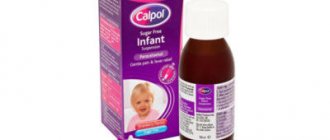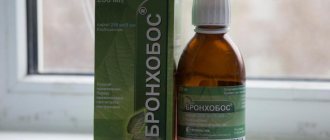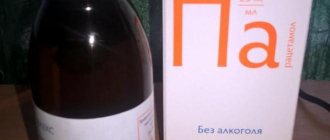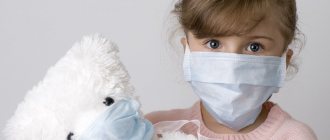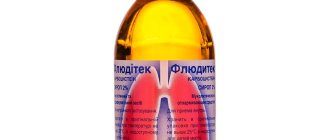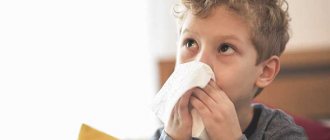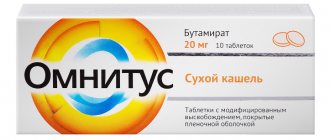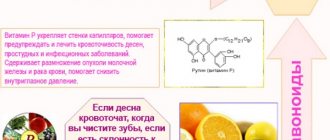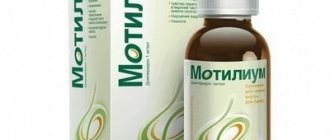Can Paracetamol be given to children, and in what dosage? This remedy effectively copes with high temperatures, while it does not have any effect on the cause of the disease, but only blocks its symptoms - pain and fever. Whether its use is justified and what kind of medicine it is, you will find out from this article.
Composition and action of Paracetamol
The drug belongs to the group of analgesic non-narcotic drugs. The active substance is paracetamol. Auxiliary components included in the composition in small proportions are potato starch, stearic acid, low molecular weight povidone. However, additional substances may vary from manufacturer to manufacturer.
The mechanism and way it works is to block a special enzyme that the body releases in response to illness, infection and injury. Thus, pain becomes “invisible” to the nervous system. The advantage of the medicine is that it does not damage the gastric mucosa, and the analgesic effect occurs quickly.
The shelf life and shelf life of the drug is two years.
Drug interactions
Paracetamol interacts with other drugs, which may affect the safety of therapy.
The following effects may be observed:
- increased harmful effects on the liver, decreased antipyretic effect of Paracetamol in combination with barbiturates, antiepileptic drugs, rifampicin;
- enhancing the effect of coumarin derivatives, salicylic acid, caffeine, codeine;
- increased methemoglobin levels - when used simultaneously with phenobarbital.
It is prohibited to combine Paracetamol tablets with other products that contain this active ingredient (Parafex, Coldflu, Coldrex and others).
Is it possible to give children Paracetamol for fever?
It can be used, but it must be taken into account that this medicine in tablet form is prohibited for children under six years of age. For children, special Paracetamol is available for sale in different release forms, containing a small amount of the active substance that will help them. It works just as effectively as an adult. The calculation of the required volume is made individually for each baby, as it depends on his weight and age. Gender doesn't matter. Be sure to monitor the expiration date and storage conditions.
You do not need a prescription to buy regular Paracetamol for children, which is why parents often try to calculate, dose and give the medicine to their baby on their own. You can’t do this, it can cause poisoning of the body. First, you should definitely consult your pediatrician.
This medication is contraindicated for newborns.
Indications
The drug is used if:
- the temperature rises to 38 °C and above (age up to 5 years), to 38.5 °C (age after 5 years) and lasts for at least 4 hours;
- complaints of toothache, headache, muscle pain.
Paracetamol is effective specifically for viral infections (ARVI).
The remedy is also used for chicken pox, measles, flu, rubella, teething, after injuries and burns.
It does not help with bacterial infections , complications of ARVI, the effect is short-lived or absent.
What forms of medication are suitable for children?
Pills
Until the age of five or six years, there is no need to use a tablet version of the medicine to treat a child. This is due to the fact that it is difficult for children to swallow a whole tablet. This often causes a gag reflex. From the age of twelve, children are already entitled to a full dose of medicine.
To properly give your child paracetamol tablets, you need to know the exact permissible dose. For one kilogram of his body weight, it is necessary to apply 10-15 (maximum - 60) milligrams of the active substance. Accordingly, the optimal single dosage of Paracetamol is from 200 to 500 mg. It may be enough for a baby to drink 2 tablets of children's paracetamol per day, but it is also permissible to increase the use up to three to four times, keeping at least four hours between doses. You can divide the tablet into quarters or halves, or dilute it in a spoon if a small child cannot take a whole one. Children two years old and younger cannot take it.
Syrup
Paracetamol for children (5 ml contains 120 mg) in the form of a suspension is not only easier to take, but also tastier. Some manufacturers produce syrups with strawberry and orange flavors. Admission is allowed from four weeks after the birth of children and even for a twelve-year-old child.
Candles
Considered the safest for children. They are instantly absorbed and can act quickly and relieve pain. Rectal suppositories, apart from paracetamol and a fat base, do not contain additional components. Suitable for use by children aged three months and up to twelve years old. Usually two to four suppositories are prescribed per day (four hour interval).
How can an overdose occur?
The safe dosage of the drug is 0.2 mg. So, for a child weighing 10 kg to become poisoned, he needs to take 1.5 g of the drug per day orally, which is 7.5 tablets.
Exceeding the dose occurs for several reasons:
- parents in a hurry did not pay attention to the content of the active substance;
- other drugs were given at the same time with paracetamol;
- increased the frequency of administration;
- the baby accidentally took the medicine on his own because it was in an accessible place.
Instructions for use of Paracetamol for children
Indications for use
- headache, dental, muscle, rheumatic, menstrual, traumatic pain. The medication has an analgesic effect;
- high fever due to various infectious diseases.
How to calculate the dose of Paracetamol for a child by age and weight
The correct calculation of the required dose of Paracetamol depends on body weight, since the permissible value is indicated per 1 kg of the child’s weight. One kilogram requires ten to fifteen (maximum sixty) milligrams of the active substance.
Until the baby reaches six years of age, Paracetamol should be taken in the form of syrup or as a rectal suppository. A teaspoon of syrup (five ml) contains 120 mg of the substance.
The tables below will help you understand how much medication is needed.
Baby in the first months after birth
Do not forget that a newborn baby cannot take medication.
| Month | Acceptable rate | |
| Syrup | Candles | |
| 1-3 month | Given only as prescribed by a doctor | One suppository 30-50 mg |
Child from 4 months to one year
| Month | Acceptable rate | ||
| Syrup | Candles | ||
| Unit (ml) | Maximum (ml) | ||
| 4 to 6 month old | 4 | 16 | One suppository 100 mg |
| From 7 to 11 months | 5 | 20 | |
One year old child
At 1 year of age, Paracetamol tablets are not recommended for children. And it would be more difficult to measure the required small dosage. For a one-year-old child, the use of suspensions and suppositories is indicated.
| Year | Permissible measure | ||
| Syrup | Candles | ||
| Unit (ml) | Maximum (ml) | ||
| 1 year | 7 | 28-30 | One suppository (two hundred mg) |
Child from 1 year to 3 years
One-year-old, two-year-old children or, if they are 3 years old, are prescribed Paracetamol in the form of syrup or suppositories. The optimal one-time and daily measure for a two-year-old and a three-year-old baby will be the same.
| Age | Permissible measure | ||
| Syrup | Candles | ||
| Unit (ml) | Maximum (ml) | ||
| Two year old, three year old | 9 | 36 | One suppository (two hundred mg) |
Child from 3 years to 7 years
At the age of six, in addition to syrup and suppositories, you can already start drinking the tablet form of the medication. For a more convenient way to swallow, you can divide it into quarters or halves, or dilute it with water. Table for children who are already 4 and 6 years old:
| Year | Permissible measure | |||
| Syrup | Candles | Tablets (single use) | ||
| Unit (ml) | Maximum (ml) | |||
| 4 | 10 | 40 | One suppository two hundred fifty mg | — |
| 5 | 10 | 40 | — | |
| 6 | 10 | 40 | 200 mg (slightly less than half a pill) | |
Child from 7 years to 10 years
| Year | Permissible measure | |||
| Syrup | Candles | Tablets (single use) | ||
| Unit (ml) | Maximum (ml) | |||
| 7 | 14 | 56 | One suppository two hundred fifty mg | 250 mg (half a large tablet) |
| 8 | 14 | 56 | 250 mg (half a large tablet) | |
| 9 | 14 | 56 | 300 mg | |
Child from 10 years to 13 years
| Year | Permissible measure | |||
| Syrup | Candles | Tablets (single use) | ||
| Unit (ml) | Maximum (ml) | |||
| 10 years | 20 | 80 | Two suppositories of two hundred fifty mg | 350 mg |
| 11 years | 20 | 80 | 350 mg | |
| 12 years | 20 | 80 | 400 mg | |
| 13 years | 20 | 80 | 400 mg | |
How much Paracetamol can be given to a child per day?
The permissible daily allowance varies from one and a half grams to four and is set on the basis that 10-15 (maximum 60) milligrams of the active substance are needed per kilogram of the baby’s weight. It is very important to take into account age to avoid poisoning of the body. For children from six to nine years old, the extreme limit is one and a half grams per day, if the weight is less than 1 kilogram - one gram. From nine to twelve years, the daily volume increases to two grams per day. For twelve-year-olds and over 12 years of age, the dosage is four grams.
A single pediatric dose of Paracetamol in tablet form varies from 200 to 500 mg. If the teenager is 12 years old or older, then he can take as much as five hundred milligrams at a time. If he is between 6 and 9 years old, the dosage is two hundred milligrams. This medication is contraindicated in newborns. Two-year-olds and younger are also not allowed.
After how many hours can a child be given Paracetamol again?
The permissible interval between doses is four hours. If you need to give it for fever, then the course is no more than three days. If used as a pain reliever - no more than five.
Overdose, combination with other drugs
Symptoms of overdose appear on the first day after taking the medicine:
- gastrointestinal disorders: diarrhea, lack of appetite, nausea and vomiting, cramps in the abdomen and supragastric region;
- disturbances in liver function. With a strong excess of the substance in the body, liver failure develops, the person falls into a coma, and death is possible.
During therapy, you should avoid using other drugs containing paracetamol, alcohol and antidepressants. A newborn baby should not take this medication.
Side effects in children
Despite the fact that Paracetamol rarely causes adverse reactions, some patients may experience allergies in the form of an itchy skin rash and urticaria. More rare effects are nausea, dizziness, hypoglycemia, sleep disturbances. These symptoms are an indication to stop taking it.
Overdose
Taking the drug in a single dose of more than 150 mg/kg of a child’s body weight causes severe, and in some cases, fatal liver damage.
Stages of poisoning:
| Stage | Manifestations | Period |
| First | Laboratory values are normal, nausea occurs, and the child vomits | On the first day |
| Second | Laboratory parameters change, the level of liver enzymes AST and ALT in the blood is above 1000 U/L | In a day or more |
| Third | Characterized by high activity of liver enzymes, high levels of bilirubin, disturbances in the acid-base balance of the blood, and decreased glucose levels | 72–96 hours |
The development of liver failure is indicated:
- neuropsychiatric disorders (feels sleepy, dizzy, speech impaired, hallucinations);
- pain in the right side under the ribs;
- swelling, abdominal enlargement;
- jaundice;
- bleeding;
- heart rhythm disturbances;
- insufficiency of functions of other organs.
In case of overdose, wash the stomach, give the patient activated charcoal, and call an ambulance. The antidote for paracetamol is acetylcysteine.
In case of liver failure, hospitalization is carried out, treatment is symptomatic. In severe cases, a liver transplant may be required.
Children tolerate poisoning more easily than adults, especially those under 6 years of age, due to their metabolic characteristics. In mild cases, treatment is carried out at home.
Is it possible to give a child adult Paracetamol?
In fact, adult Paracetamol differs from children's only in the form of release and the amount of active substance. Therefore, children should not take it, as it is likely to lead to an overdose. We must not forget that this medication is contraindicated for newborns. Even a severe cold after birth in this case is not an indication for use.
To make it more convenient to take the tablet, you need to divide it into quarters or dilute it with water. Children two years old and younger are not allowed.
Contraindications
The list of contraindications is small compared to other medications. This includes:
- individual intolerance;
- diseases of the gastrointestinal tract with the formation of ulcers and erosions, gastric bleeding, inflammation, active bleeding;
- progressive pathologies of the kidneys, liver, severe forms of failure of these organs;
- intolerance to acetylsalicylic acid or other NSAIDs;
- hyperkalemia (increased potassium levels in the blood).
We are treated correctly
Paracetamol is not a panacea for all diseases. Yes, it helps relieve pain and relieve fever. But there is no need to force medication on your baby if there is a small mark on the thermometer or if there is a slight malaise. It is necessary to observe the measure, maintain intervals. You should always consult a doctor first, as thoughtless self-medication will only aggravate the situation and harm the baby’s health. You must read the instructions carefully. Inaccessibility to children is an important storage condition.
Previous post How to teach a child to eat with a spoon on his own - when to teach children to eat, recommendations
Next entry Sore throat in a child - causes and symptoms, treatment of sore throat in children
Analogs
We list the known analogues of the drug:
- Panadol . The active ingredient is paracetamol. Two types of tablets are available: in a blister with a shell and soluble in water, which can be purchased within 50 rubles. Another form of production is rectal suppositories, which cost twice as much.
- Efferalgan . A medicine based on paracetamol, which is produced in the form of a sweet syrup at a price of 150 rubles. and in tablets for dissolution in water, 100 rubles. per package. Thanks to this form, Efferalgan is well absorbed in the intestines.
- Tsefekon D. Rectal suppositories, which can be purchased within 50 rubles. The active ingredient is also paracetamol, which is well absorbed through the capillaries of the rectum. There are fewer side effects from this form than from classic tablets.
Paracetamol for children is considered one of the safest drugs that quickly relieves pain and reduces fever. During treatment, dosages should be strictly observed, and if side effects occur, immediately call a doctor at home. The course of home therapy should not exceed 3-5 days.
Author: Denis Filin, doctor, especially for Mama66.ru
Let's sum it up
- The answer to the question whether paracetamol can be given to a child has been received, and it is positive.
- Before you decide to give the drug, you must get your doctor's permission.
- The dosage form of paracetamol does not affect the result, the main thing is that it suits the child.
- Give the medicine strictly according to the instructions, observing the recommended dosage.
- Do not use this remedy as an antipyretic too often.
We also recommend reading: Is it possible for a child to go to the seaside with his parents? Read all the most useful things on our website: Is it possible for a child?
Helpful information
Paracetamol syrup is also produced for children, which is more convenient to give to children, and suppositories. As we have already said, this medicine has analogues, for example, Efferalgan suppositories, which help protect the child’s digestive tract, or this is Efferalgan in the form of syrup. You can also read the instructions for these medications and reviews from those who have already used them in practice and shared their impressions.
What do you do when your little one gets a cold? What substances come to the rescue and have you tried using Paracetamol? We will be glad if you share your stories and reviews, and leave your comments about the information you have read.
